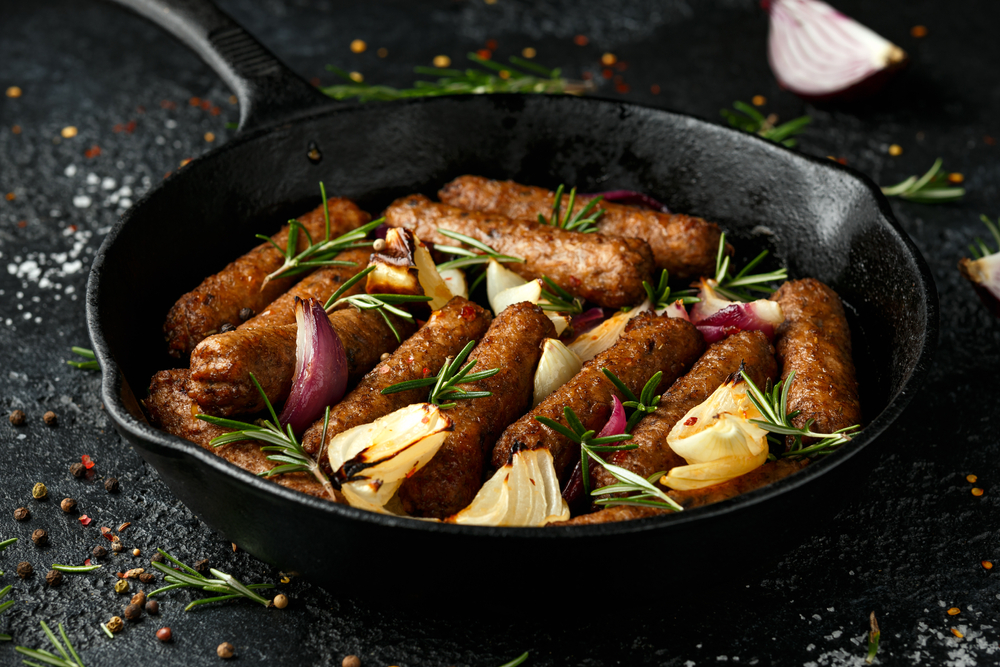Sausage comes in endless varieties, but sage sausage stands out for its signature taste. One whiff of sizzling sage sausage patties or links and your nose picks up on its aromatic, woodsy fragrance. Take a bite, and you’ll notice subtleties beyond typical breakfast sausage flavors. The savory meat has an extra layer of warmth, a hint of pepper, and an earthy essence imparted by one special ingredient – sage.
If you’ve never experienced the unique taste of sage sausage you may find yourself wondering what does sage sausage taste like? From its herbaceous highlights to the entire flavor profile, let’s explore the mouthwatering world of sage sausage.
What Gives Sage Sausage Its Distinct Flavor?
Sage sausage contains ground pork seasoned with sage along with other spices The wonderful fragrance and flavor come from the dried sage herb Sage has an earthy aroma and a slight pepperiness. When added to sausage, it gives the meat a warming and mildly bittersweet taste.
Sausage seasoning blends commonly contain black pepper, garlic, thyme, fennel seeds, and savory. Sage plays the starring role though. It sets sage sausage apart from other breakfast sausage varieties. Without that addition of dried sage, you’d be missing those notes of woodsy sweetness that balance so perfectly with pork.
The Entire Sage Sausage Flavor Experience
While sage makes sage sausage recognizable, the complete flavor profile includes mild, meaty pork and supporting seasonings. Let’s break it down:
-
Savory pork – Ground pork provides a rich, umami base. The subtle meaty flavor allows the spices to shine.
-
Earthy sage – Sage gives sage sausage its namesake flavor. Enjoy hints of the woods with mild pepper and bitterness.
-
Peppery spices – Black peppercorns offer light heat while herbs like thyme contribute a touch of spice.
-
Pungent garlic – Garlic powder adds an aromatic punch and savory edge.
-
Sweet fennel – Fennel seeds lend a light licorice sweetness in the background.
-
Mellow savoriness – Savory’s subtle umami enhances the overall mouthfeel.
When you add up all those elements – pork, sage, pepper, garlic, etc. – you get a sausage with incredible depth and balance. No single flavor overpowers. Instead, you get sweet, savory, earthy, and spicy notes in harmony.
How Strong is the Sage Flavor?
The intensity of the sage can range based on the particular recipe or brand of sausage. Some versions allow the sage to take center stage and really dominate with its woodsy personality. Other varieties keep the sage flavor more subdued so it melds seamlessly with the blend of seasonings.
In general, expect to taste the sage distinctly in each bite of sage sausage. But it likely won’t overwhelm. The sage flavor will taste robust but balanced. Of course, you can control the sage intensity by making your own sausage at home and adjusting the sage quantity to your preferences.
Other Questions About Sage Sausage Flavor
Beyond the basics, sage sausage newbies often have more questions about what to expect from this herb-infused breakfast staple:
Is sage sausage spicy?
Sage sausage carries mild spice, mostly from the black pepper. But it’s not hot and spicy like a chorizo or jalapeño sausage. Sage and pepper provide warmth, not heat.
Does it taste sweet?
You’ll notice a mild natural sweetness as the sage’s flavor emerges, but traditional sage sausage doesn’t contain added sugars. The overall profile leans more savory than sweet.
Can you swap out the sage?
You can experiment with other herbs like rosemary or marjoram. But sage has that ideal woodsy, slightly bitter taste that balances so well with pork’s richness. No herb can truly mimic sage’s flavor.
How’s the texture?
Properly seasoned and cooked, sage sausage should have a moist, tender bite. The ground pork retains enough fat for richness while the sage adds flecks of earthy flavor throughout.
What dishes pair well with it?
Beyond breakfast plates, sage sausage makes a fantastic pizza topping. Its herbal flavor also complements pastas and soups beautifully. Fried sage sausage crumbles work great in stuffings, rice, potatoes, and more.
Can you eat it on its own?
Absolutely! Well-made fresh sage sausage patties or links taste amazing all on their own. Brown them up in a skillet and the pork fat creates a lovely crispy exterior.
Recreating the Taste at Home
Once you get a craving for the savory, sage-laced flavor, you’ll want to make your own homemade breakfast sausage. Here are some quick tips:
-
Use pork shoulder for the right fat content
-
Add 3/4 to 1 tablespoon of dried sage per pound of meat
-
Include black pepper, garlic powder, thyme, and fennel seeds
-
Chill the seasoned sausage overnight before cooking
With good fresh ingredients and the perfect blend of seasonings, you can whip up tasty sage sausage any time.
The Final Take on Fabulous Sage Sausage
So what does sage sausage taste like in the end? Each satisfying bite delivers a beautiful balance of earthy, peppery herb flavor and rich, meaty pork taste, making your mouth water for more. The next time you spot those enticing sage sausage links or patties on a breakfast menu, take the plunge. Or better yet, recreate the flavor at home. One sample of that sage-infused sausage, and you’ll fall in love with its unique aroma and woodsy essence.

k
This breakfast sausage seasoning is heavy on the sage and heavy on the deliciousness
FAQ
Is sage jimmy dean sausage good?
What is the difference between Italian sausage and sage sausage?
What does apple sage sausage taste like?
What’s the difference between Italian sausage and regular sausage?
